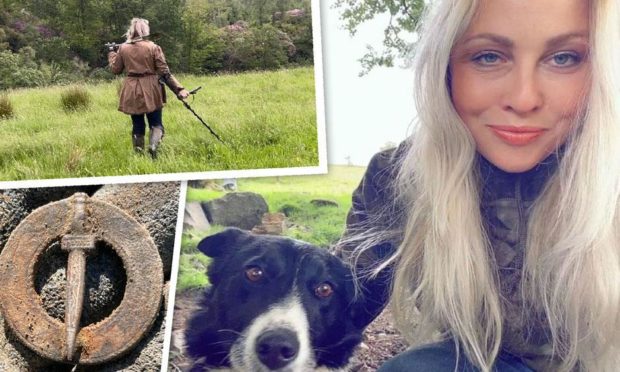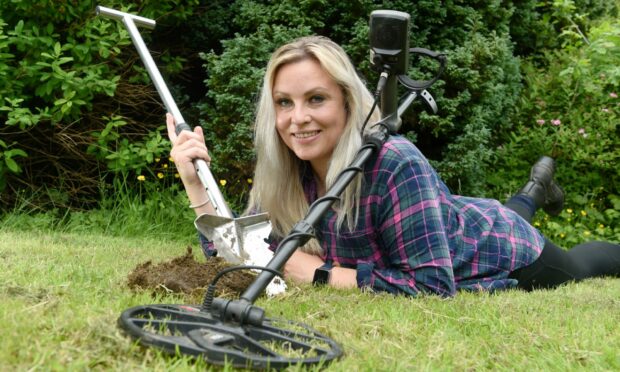Mystery surrounds a medieval ring brooch found by a metal detectorist in Argyll.
The piece, which experts say will end up in a museum, is currently going through the Treasure Trove process.
It was found by Susan Collins of Barcaldine, who is excitedly awaiting news from the government department which carries out investigations and object assessments.
One theory from Susan, 39, is that it could have belonged to a Highlander battling with a redcoat, as she found an English medieval coin in the same spot.
Like any good detectorist, Susan will not disclose the exact locations of her finds.
But mostly she operates in the Oban area, with permission from local farmers and landowners.
Rich with history
Detecting expert Graeme Rushton believes the brooch could be silver, showing it belonged to someone of higher status, and could be quite valuable.
The Treasure Trove has also indicated it is probably a museum piece.
Graeme, author of A Guide to Metal Detecting, said: “I have only seen pictures of it so I am uncertain at this point. But it does to me look like it could be silver.
“Most of them are bronze. If it is silver, that puts the cherry on top. But even if it isn’t silver it would have been someone of status that owned it.
“It would be someone of high standing in the community, which is really interesting.
“If she can link it to a local castle or big house I would say its owner came from there. There must be some landmark in the local area which links the ring brooch to it.”
The area around Oban is rich with history, with Dunollie Castle in the town and Castle Stalker at Appin and Inveraray Castle, home of the Duke of Argyll, less than an hour’s drive away.
‘I was so excited’
Susan found the brooch on June 18 when she started investigating a new site.
She said: “I went to a new permission where I knew there was a medieval ruin. Within the first 15 minutes I found what I thought was a coin. It was only when I lifted it and moved the mud off it I realised it was a ring brooch.
“It was intact. The field had been ploughed in the 1990s but somehow it didn’t get damaged. I don’t think he went low enough.
“I was so excited, I jumped in the car and went straight home with it.
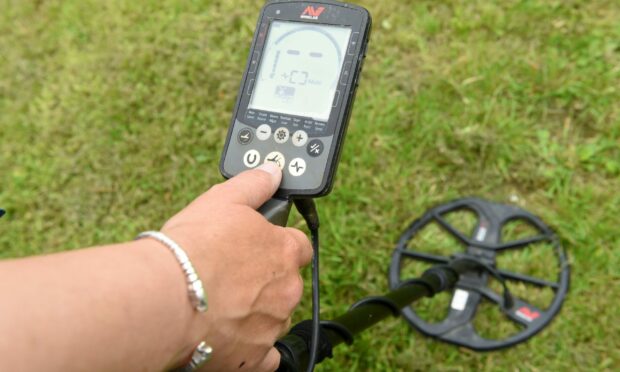
Susan added: “I knew it was special, I could tell from the design it was an old piece. I sent a picture straight away to Graeme and he said to be really careful with it.
“It’s the best thing I have ever found. It was that feeling you get when you get something out of the ground and no-one has touched it for hundreds of years.
“The following day I found an English medieval coin in the same spot. It made me wonder, was it a redcoat who dropped it while in pursuit of the Highlander who lost the pin?
“As far as ring brooches go, I can’t find anything else like it online. It has engraving on each side and a sword down the centre.
“It is being sent to the Treasure Trove. They have told me that they will probably want to keep it, that it’s a museum piece.
“I would like to see it in a museum so that people can enjoy it.”
Does this treasure hunter have the luck of the gods?
Graeme added: “Susan has done very well finding what she has in such a short space of time.
“Lots of people detect for decades and don’t find artefacts of that status, so she has been very lucky to find it.
“She may have the luck of the gods, you never know.”
Susan grew up on the isle of Seil and has always been fascinated by history.
She said: “I have always been interested in old things and enjoy rummaging around bottle dumps. I like to go walking around ruins.”
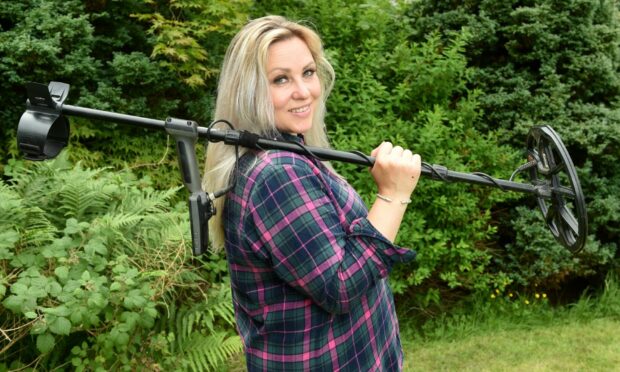
She briefly took up metal detecting over a decade ago with a cheap detector, and didn’t have much success.
Then in November, after saving up around £900, she treated herself to an Equinox 800 detector.
And it has already paid for itself.
She said: “This time I found much better stuff. The technology means you don’t waste time digging up rubbish. It tells you whether it is iron, or other materials not worth digging for.”
Suzie Detects UK
Susan makes YouTube videos of her adventures and is sponsored by Unearthed UK metal detector suppliers. Her tagline is Suzie Detects UK.
She said: “I look at maps from the 1700s beside maps from today. You can see what used to be there. You find settlements, then you approach the land owner for permission and see what you can find.
“I always go out when I have a spare hour. Mostly on rural pasture ground.”
Port Appin outside Oban has produced some interesting artefacts.
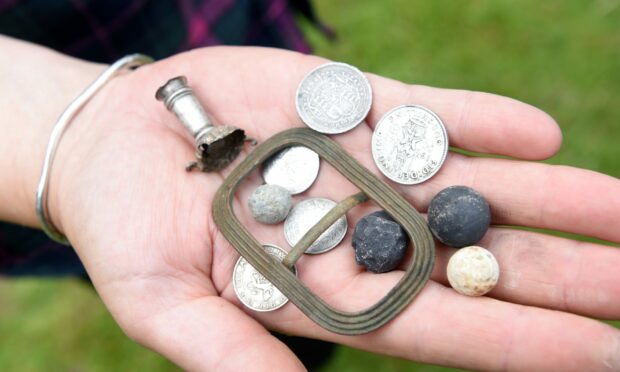
She has uncovered a medieval cup weight, potentially a medieval gaming dice, countless musket balls and a Victorian seal.
It is a fun hobby, but not without its perils.
Susan said: “Anything you find doesn’t belong to you or the landowner, it belongs to the Crown, you then have to notify the Treasure Trove. Most of the time they just want to record it, take pictures and send it back.
“If they decide to keep it they send a cheque instead and allocate it to a museum. You have got no choice, if they want to buy it you have got to sell it.”
The rules
Two detectorists who unearthed a hoard of gold jewellery in 2019 were jailed for 10 years for trying to sell it on the black market.
The loot, which also included silver ingots and coins, was buried more than 1,000 years ago in Herefordshire by a Viking warrior.
George Powell of Newport, and Layton Davies of Pontypridd, should legally have declared the find, estimated to be worth as much as £12million.
They were sentenced to 10 years and eight-and-a-half years respectively for stealing.
The judge said they had not only cheated the landowner, but also the public out of the rare and significant pieces.
Next find for the treasure hunter
Susan warned: “When some people get a detector they don’t realise there are rules. All land belongs to somebody.
“The beach is the only place you can go without permission, because it is owned by the Crown. But some beaches are private and you need permission.”
She added: “If I find something on a farmer’s land, whatever it is worth, I always split the money with the landowner.”
And she is looking forward to tackling her next spot. “At my new permission, they found a neolithic axe head there while digging drains in the 1980s so I am hoping for some good finds.”
